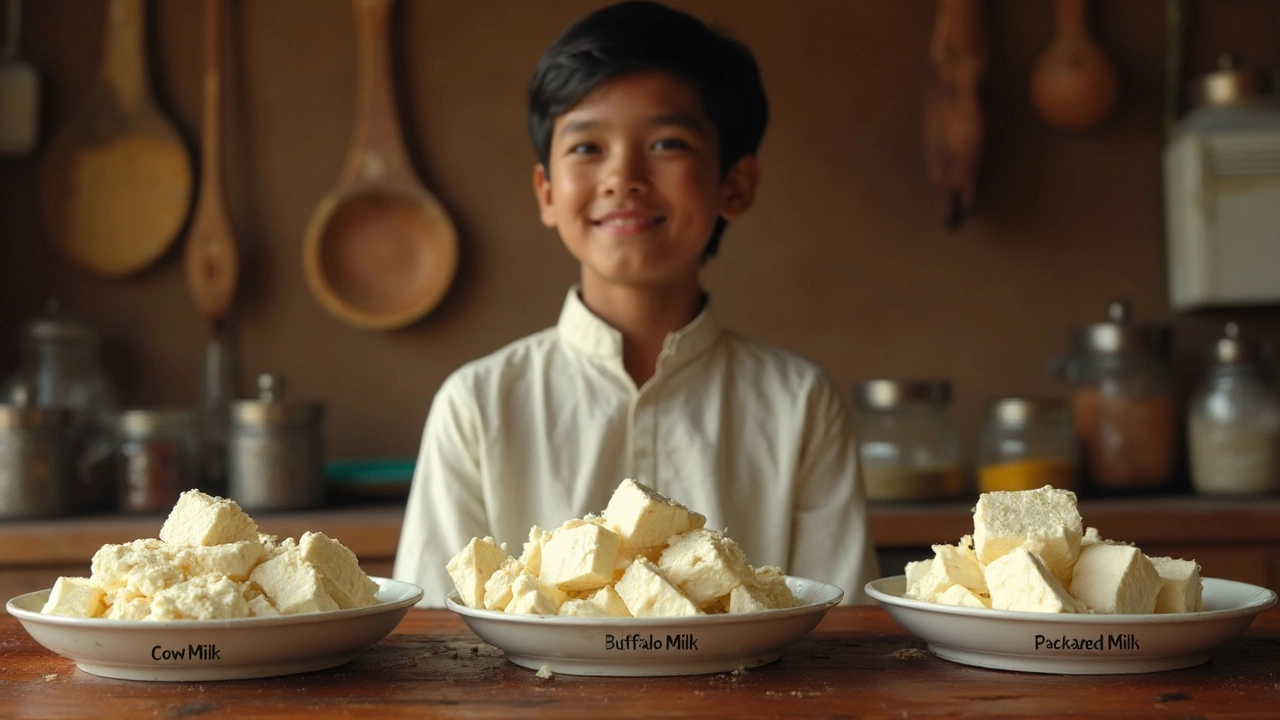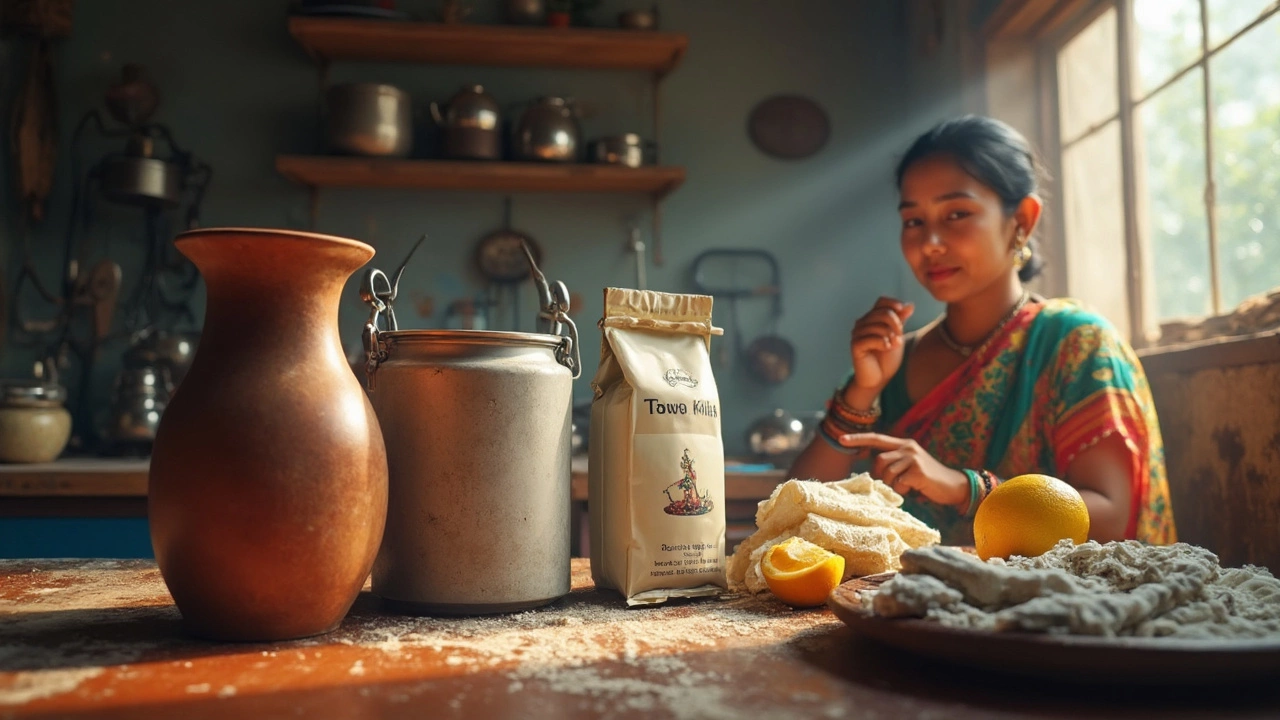Homemade paneer is a dream when it turns out soft, bouncy, and creamy. But here’s the first thing you need to know—your choice of milk can make or break the whole thing. Not all milk is created equal when it comes to getting that perfect block of paneer.
A lot of people just grab store-bought, low-fat milk and wonder why their paneer ends up rubbery or barely comes together. Trust me, I’ve been there. If you use skim or ultra-pasteurized milk, you’ll often end up disappointed—these types just can’t curdle properly. Full-fat, fresh milk is honestly the secret weapon for soft and rich paneer.
- Types of Milk Commonly Used for Paneer
- Texture and Taste: What Changes With Milk
- Buffalo vs Cow Milk: Which Wins?
- Tips for Better Paneer (No Matter the Milk)
Types of Milk Commonly Used for Paneer
If you want amazing paneer at home, the first thing you need to care about is the kind of milk you use. Here’s the real scoop on your main options and why each one gets totally different results.
- Cow Milk: This is probably the most used type, especially if you live in a city. Cow milk has less fat than buffalo, which means the paneer you get is softer, lighter, and a bit more crumbly. Great for dishes where you want your paneer to soak up flavor, like palak paneer or kadai paneer.
- Buffalo Milk: If you’ve never tried making paneer with buffalo milk, you might be surprised. It’s got more fat, so your homemade paneer turns out firmer and richer. Think about the dense blocks you get at some restaurants—yeah, that’s usually buffalo milk magic.
- Packaged/Tetra Pack Milk: These are super easy to get at any store. If you choose the full-fat or full-cream versions, they work quite well for paneer. But if the box says “ultra-pasteurized,” there’s a risk. Sometimes, the protein structure is ruined so your milk just won’t curdle the right way.
- Toned Milk / Low-Fat Milk: These have less fat. Sure, they’re good for drinking, but for paneer? Not so much. Low-fat milk usually gives you dry, chewy paneer with very little yield.
- Raw, Unprocessed Milk: If you have access to fresh, raw milk from a farm, grab it! This type always gives the best paneer with maximum softness, taste, and creaminess. But remember to boil it first to kill germs.
Sneaky tip: Avoid milk powders or reconstituted milks—they’re just not worth it. You’ll end up with paneer that tastes odd or falls apart while cooking.
| Milk Type | Fat Content | Paneer Texture |
|---|---|---|
| Cow Milk | ~3.5% | Soft, crumbly |
| Buffalo Milk | ~7-8% | Firm, dense |
| Full Cream Packaged Milk | ~6% | Balanced, soft but holds shape |
| Low-Fat/Toned Milk | ~1.5% | Crumblier, less yield |
So, if you’re chasing flavor, texture, and more paneer per liter, always aim for full-fat or, even better, fresh milk. That’s what all the pros do!
Texture and Taste: What Changes With Milk
Choosing the right milk for paneer is not just about yield—it’s about nailing the texture and taste you love. Here’s how different milk types change your homemade paneer.
Cow milk usually gives a softer, smoother paneer. The curds are smaller and less dense, so you’ll notice it crumbles easily when pressed lightly. This is perfect if you like paneer that soaks up curry flavors or want to use it in soft desserts like rasmalai.
Buffalo milk is a game-changer for people who want a firmer, richer paneer. Because it has more fat and protein, the curds stick together tighter, making a block that holds shape well and fries beautifully. You’ll taste the difference—the richness is almost buttery, and the paneer feels chewier (but not rubbery, if done right).
Now, if you’re grabbing packaged milk (like the regular stuff in cartons), watch out: the more it’s processed—think pasteurized, homogenized, or ‘ultra’ treated—the less ideal it is for making paneer with great texture. UHT milk (“ultra-high temperature”) often just splits into weird clumps that won’t set together properly. Always check the label for ‘full cream’ or ‘whole milk’ for the best results.
- Use full-fat cow milk for extra-soft paneer—great for grilling or making crumbled toppings for salads and chaats.
- Pick buffalo milk when you want firmer paneer you can cube, fry, or use in heavy gravies. It’s the top choice for dishes like paneer tikka or paneer pakora.
- Try mixing both (half cow, half buffalo). You’ll get a nice balance of softness and hold—my aunt swears by this blend!
For a quick peek at the differences, check out this cheat sheet:
| Type of Milk | Texture | Taste | Best For |
|---|---|---|---|
| Cow Milk | Soft, crumbly | Mild, milky | Rasmalai, salads, curries |
| Buffalo Milk | Firm, dense | Rich, creamy | Paneer tikka, frying, heavy gravies |
| Packed/UHT Milk | Can be rubbery or won’t set | Bland | Not recommended |
There’s no single right answer—just pick the milk for paneer that matches the taste and bite you’re after!

Buffalo vs Cow Milk: Which Wins?
So when it comes to making paneer, most people in India debate: buffalo milk or cow milk? Both are popular, but they're totally different in how they behave and taste.
Buffalo milk has more fat—usually about double compared to cow's. That extra fat means you get a yield of paneer that's creamier, richer, and heavier. If you like paneer with a chewy bite or if you want to grill or fry it without the cubes falling apart, buffalo milk is your best bet.
Cow milk, on the other hand, has less fat but gives you a softer, lighter, crumbly style paneer. It's perfect if you're after something that melts easily in the mouth or works well in light curries and salads. Homemade paneer from cow milk tends to release more whey but has a fresh, milky flavor.
Let’s size up the numbers for one liter of each milk:
| Milk Type | Fat Content (%) | Paneer Yield (grams per liter) |
|---|---|---|
| Full-Fat Buffalo Milk | 6-7 | 200-220 |
| Full-Fat Cow Milk | 3.5-4 | 150-170 |
If you want seriously creamy homemade paneer for grilling, pick buffalo milk. Want it more crumbly and soft for stuffing samosas or in rasgulla? Cow milk does the job. Just avoid skim or toned milk unless you like your paneer dry and squeaky.
Try making paneer from both. You’ll see the difference the very first time you squeeze out the whey. Trust me, once you feel that yield in your hands, it’s unforgettable.
Tips for Better Paneer (No Matter the Milk)
It doesn’t matter if you use cow milk or buffalo milk—a few key things will always help your homemade paneer turn out great. After dozens of kitchen experiments (and a few not-so-great blocks), here’s what actually works every time:
- Always use fresh, full-fat milk. Skim and low-fat milks just don’t have enough fat to give you creamy, soft paneer. Ultra-pasteurized milk (the kind with a super long shelf life) almost never works, so skip it if you can.
- Bring the milk to a slow boil, not a rolling one. Once you see small bubbles around the edges, turn off the heat. This keeps the proteins from toughening up and makes the curds softer.
- Add acid gently and stir slowly. Lemon juice and vinegar both work, but add them a little at a time until the milk splits and you see clear whey. Stirring too much can make the curds break into tiny bits, which makes the paneer crumbly.
- Don’t rush the draining step. Let it hang for at least 30 minutes, but don’t overdo it or your paneer will turn out dry. For extra soft paneer, you can press it under a light weight for just 5-10 minutes.
- Rinse the curds with cold water. This keeps the paneer from tasting sour and also helps it set better.
Here’s a quick breakdown of how much paneer you get from different milks—it’s not as much as you might think:
| Milk Type | Yield from 1 Liter |
|---|---|
| Buffalo Milk | 220-250g |
| Cow Milk | 180-200g |
| Packaged Full-Cream | 180-210g |
If you don’t have access to farm-fresh milk, you can get pretty good results with store-bought full-cream milk. Just avoid anything marked “toned” or “skimmed.” Want richer paneer? Mix a spoonful of heavy cream in right before curdling. It’s a game-changer for texture.
Finally—don’t toss out that leftover whey! It’s packed with protein and flavor. Use it instead of water in chapati dough or even in soups to avoid waste and squeeze every bit out of your milk for paneer adventure.
